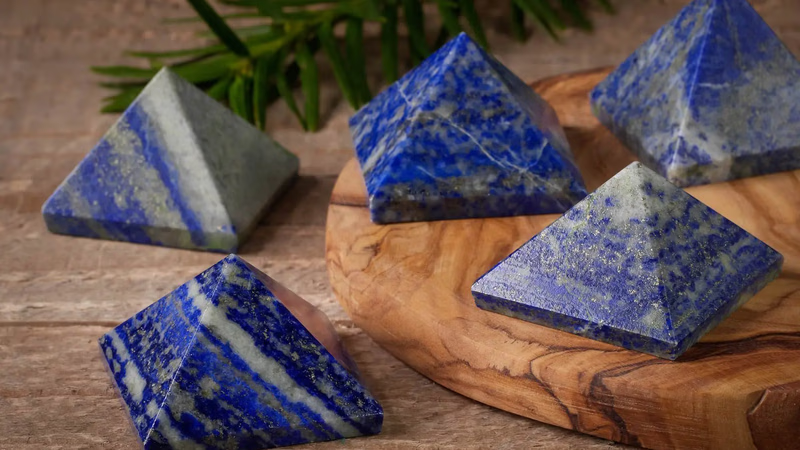
Lapis lazuli: A powerful stone for communication and meditation.
In chakra therapy and various spiritual traditions, Lapis lazuli is associated with the activation and balancing of the throat chakra, also known as the Vishuddha chakra. The throat chakra is believed to govern communication, self-expression, and the ability to speak one's truth. Lapis lazuli is considered a powerful stone for stimulating and harmonizing this energy center. Lapis lazuli is believed to enhance communication skills, both in verbal and written forms. It is thought to promote clarity, eloquence, and effective self-expression. The stone is said to help overcome shyness, fear of public speaking, and any blockages in expressing one's thoughts and emotions.
When working with Lapis lazuli for chakra therapy or spiritual practices, it is common to place the stone on or near the throat chakra during meditation or energy healing sessions. This is believed to help clear any blockages and balance the energy of the throat chakra, promoting effective communication and self-expression. Azure is often used as a meditation tool to deepen one's spiritual practice. The stone is believed to help calm the mind, quiet internal chatter, and facilitate a state of deep meditation. It is thought to assist in accessing inner wisdom, higher knowledge, and spiritual guidance during meditation sessions.
Lapis lazuli is believed to harmonize and balance masculine and feminine energies within an individual. It is associated with integrating the qualities of assertiveness, strength, and action (masculine energy), with intuition, compassion, and receptivity (feminine energy). This balance is thought to support overall well-being and spiritual growth.
This stone helps the person to gain more knowledge from within and eliminate emotional damage. The properties of Lapis lazuli also enhance intuitive awareness, increase meditation depth, activate the third eye and enhance a person's ability to dream and understand intuitive guidance. Lapis Lazuli was used to bury and adorn the pharaohs in ancient Egypt, and as a stone belonging to the monarchy and spirituality, it has excelled over others. This stone belongs to the truth and is an inspiring awareness and brings new information to a person's mind in the form of images instead of words.
Azure is associated with truthfulness, honesty, and integrity. It is believed to encourage the pursuit of authenticity and the alignment of one's actions and words with their true self. The stone is said to support individuals in speaking their truth with confidence and integrity. Lapis lazuli is considered a stone of spiritual awakening and higher consciousness. It is believed to stimulate intuition, psychic abilities, and the exploration of spiritual realms. The stone is thought to enhance one's connection to divine wisdom, facilitating spiritual growth and self-discovery.
Lapis lazuli is associated with promoting inner peace, serenity, and emotional healing. It is believed to calm the mind, reduce stress, and alleviate anxiety. The stone is said to facilitate deep relaxation and assist in accessing a state of inner stillness and tranquility. Lapis lazuli is sometimes associated with the third eye chakra (Ajna), which is related to intuition, insight, and spiritual vision. The stone's deep blue color and connection to the higher mind are believed to support the activation and opening of the third eye, enhancing one's intuitive abilities and inner guidance.
Lapis lazuli is associated with promoting self-awareness and self-expression. It is believed to help individuals understand their true desires, strengths, and weaknesses. By working with Lapis lazuli, one may gain greater clarity about their authentic self and find the courage to express themselves honestly and openly. Azure is considered a stone of emotional healing and balance. It is believed to assist in releasing repressed emotions and unresolved emotional patterns. The stone is thought to bring harmony to the emotional body, promoting a sense of inner peace, emotional stability, and serenity.
Azure is sometimes associated with providing spiritual protection. It is believed to shield the aura from negative energies, psychic attacks, and energetic pollutants. The stone is thought to create a protective barrier around the individual, allowing them to feel safe and supported on their spiritual journey. Lapis lazuli is often associated with connecting to higher realms and spiritual beings. It is believed to facilitate communication with spirit guides, angels, and ascended masters. The stone's energy is thought to help individuals receive divine messages, insights, and guidance from the spiritual realm.
-

Lapis lazuli is a significant stone in chakra therapy, particularly for the throat chakra, which governs communication and self-expression. It enhances verbal and written communication skills, promotes clarity, and helps overcome shyness and public speaking fears. When used in meditation or energy healing, placing Lapis lazuli near the throat chakra is believed to clear blockages and balance energy. The stone also harmonizes masculine and feminine energies, supporting overall well-being and spiritual growth. Additionally, Lapis lazuli aids in accessing inner wisdom and enhances intuitive awareness. Historically valued by ancient Egyptians, it symbolizes truthfulness and integrity, encouraging authenticity in one"s actions. The stone promotes emotional healing by calming the mind and alleviating anxiety while facilitating deep relaxation. It is also linked to the third eye chakra, enhancing intuition and spiritual vision.
Furthermore, Lapis lazuli assists individuals in understanding their true selves, releasing repressed emotions, and providing spiritual protection against negative energies. Overall, it serves as a powerful tool for self-discovery and connection to higher realms. "
-
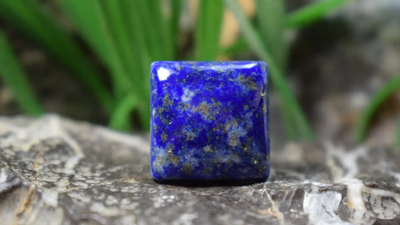
Identifying genuine Lapis lazuli from synthetic alternatives requires careful examination of various characteristics. Natural Lapis lazuli is typically deep blue with unique variations, including golden or white calcite streaks and specks of pyrite. In contrast, synthetic stones often exhibit a uniform, overly vibrant color that lacks the natural imperfections found in authentic specimens. Price can also be a telltale sign; if a Lapis lazuli stone is significantly cheaper than market value or available in large quantities, it may be synthetic. Techniques for verification include using a Chelsea Filter, which reveals different light reflections between natural and synthetic stones. Additionally, physical tests such as checking for an unpleasant odor when heated or observing color differences in cracks can help distinguish authenticity. Natural stones usually contain inclusions and irregular patterns, while synthetics tend to have a consistent appearance. For definitive identification, consulting with a qualified gemologist or reputable laboratory is recommended to ensure the authenticity of the stone.
-

Lapis lazuli"s value is primarily determined by its color, with the most sought-after stones showcasing a deep, vivid blue hue. Inclusions of minerals like pyrite and calcite can enhance the stone"s beauty, but excessive inclusions may detract from its clarity. The size and shape of Lapis lazuli vary based on their intended use, with larger stones favored for statement pieces and smaller ones for intricate designs. A high-quality polish is essential for maximizing visual appeal, as it enhances the stone"s color and shine. The origin of the stone also plays a significant role in its quality; Afghan Lapis lazuli is historically esteemed for its rich blue color and high pyrite content, while stones from Chile and Russia offer unique characteristics. Authenticity is crucial when purchasing Lapis lazuli, as synthetic alternatives exist. Buyers should seek reputable sources to ensure they acquire genuine stones without treatments that alter their natural appearance. While not rare, high-quality Lapis lazuli with exceptional features can be scarce, making them valuable to collectors.
Ultimately, the best type of Lapis lazuli depends on personal preferences regarding color intensity and inclusion patterns. "
-
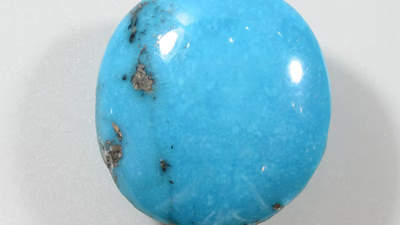
Synthetic Lapis lazuli, or synthetic Azure, is a man-made alternative to natural Lapis lazuli gemstones. Created in laboratories, it mimics the appearance of natural stones using various minerals and binding agents. Commonly, powdered minerals like lazurite and pyrite are combined with resins to produce synthetic stones. While these synthetic versions are more affordable and widely available, they lack the authenticity and inherent value of natural Lapis lazuli. Buyers should be cautious and knowledgeable about distinguishing between the two types when purchasing. Natural Lapis lazuli is a metamorphic rock valued for its unique color and historical significance, often used in jewelry and art. In contrast, synthetic stones may fade over time depending on the quality of materials used in their production. Various other stones can be confused with natural azure due to similar appearances, including sodalite and azurite.
The market also features different names for synthetic products that can mislead consumers. Understanding these differences is crucial for making informed purchasing decisions.
-
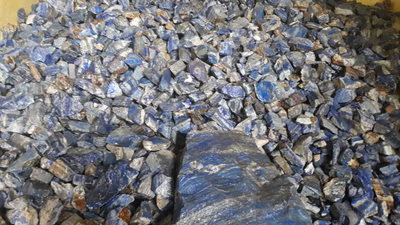
Lapis lazuli, or azure, is a semi-precious gemstone renowned for its vibrant blue hue and historical significance. Composed mainly of lazurite, calcite, and pyrite, its color can range from light to dark shades, often featuring golden flecks or white streaks. Historically sourced from Afghanistan"s Sar-e-Sang mines, it is also found in Russia, Chile, Canada, and the U. S. Lapis lazuli has a moderate hardness of 5 to 6 on the Mohs scale, making it suitable for jewelry and decorative items. Its cultural importance spans thousands of years; ancient civilizations like the Egyptians and Greeks valued it for its protective properties and associations with wisdom and enlightenment. The stone is used in various forms including beads, pendants, sculptures, and as a pigment for ultramarine in art. Lapis lazuli"s unique characteristics include its opaque nature and glassy to waxy luster.
It has been utilized not only for aesthetic purposes but also in dyeing fabrics and pottery. The gemstone"s rich history reflects its enduring appeal across cultures. "
-
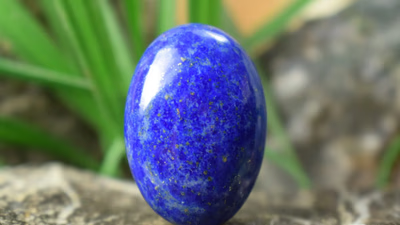
Lapis lazuli, a highly valued gemstone, has been mined for thousands of years in West Asia, particularly in Afghanistan and Iran. The geological conditions in this region are ideal for the formation of Lapis lazuli deposits, which are primarily found in metamorphic rocks. The Sar-e-Sang mine in Afghanistan is one of the oldest and most renowned sources, with a history dating back over 6,000 years. Other notable sources include the Andean region of Chile and Lake Baikal in Russia. The craftsmanship and mining traditions passed down through generations have established West Asia as a leading producer of high-quality Lapis lazuli. Despite the abundance of resources, demand often exceeds supply, leading to the use of synthetic alternatives. The cultural significance of Lapis lazuli is profound; it has been utilized in jewelry and religious artifacts throughout history. As global interest continues to rise, maintaining these mines is crucial for sustaining both local economies and international trade.
-

Lapis lazuli has been revered since ancient times for its medicinal and magical properties. In ancient Egypt, it was ground into powder for use in ointments and cosmetics, believed to cure eye ailments and protect against evil spirits. Greek physician Dioscorides noted its cooling effects and therapeutic benefits for fevers, inflammation, and skin diseases. Historical texts from scholars like Ibn Sina highlight its medicinal uses, including treatment for digestive issues and as an antidote for poison. Lapis lazuli was also recognized in Traditional Chinese Medicine (TCM) for its benefits to the liver, spleen, and respiratory system, promoting mental clarity and spiritual well-being. Its applications extended to Islamic medicine where it was used to treat fevers and enhance cognitive functions. Despite the lack of archaeological evidence regarding its trade specifically for medical purposes, ancient writings provide substantial insights into the healing properties attributed to this azure stone.
-
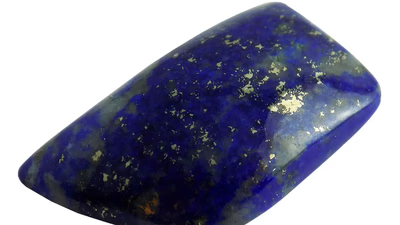
Lapis lazuli, a blue stone with historical significance, has been referenced in ancient texts, including the Epic of Gilgamesh and Islamic literature. In ancient Mesopotamia and Egypt, it symbolized power and divinity, often used in jewelry and art. Although not explicitly mentioned in the Qur"an, it is associated with Paradise in Islamic tradition. The stone"s vibrant azure color has adorned Islamic art and architecture, representing spiritual realms. Historical accounts by travelers like Ibn Battuta highlight its use in decorative arts across various regions. Lapis lazuli was traded along significant routes such as the Silk Road, connecting civilizations from Afghanistan to the Mediterranean. Its metaphysical properties are recognized in Islamic traditions, believed to promote mental clarity and protection against negativity. The trade of Lapis lazuli not only reflects its economic value but also its cultural importance across different societies.








